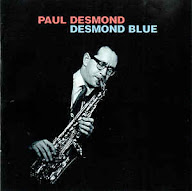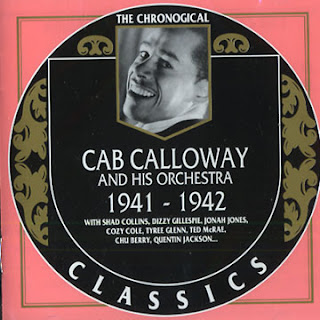Paul Desmond - Desmond Blue
 |
| 1962 original cover |
Mixing jazz with an orchestra is an attractive sound and has been the basis for "crossover" jazz since the days of Paul Whiteman through Bird with Strings or Clifford Brown with Strings through recent recordings by the Metropole Orchestra with various guest artists. It's fundamentally a commercial sound and done well is an enticing mix of commercial and artistic values. Eventually, this formula became the beginning of the commodification of jazz as a product, By 1962, RCA completed the image with a defined target audience as such large record companies liked to market their product to large swaths of the population. Albums like this one seem to be marketed towards young bachelors wanting to impress their date with an edgy jazz record. Perhaps they wanted to feel more sophisticated and so they picked up a record by a somewhat familiar name with an attractive woman on the cover and the non-credited liner notes that seems to be speaking to this demographic:
"This album is a listening experience unlike any you have ever enjoyed. And enjoy it you will---it is rich, subtle, varied, exquisitely tasteful, and masterfully performed in a design which accomplishes an apparently irreconcilable aim: to soothe as well as stimulate the sophisticated listener."
From the late 1950's through the 1970's, there are tons of records with this formula as such I am often wary when confronted with this sort of record. Granted, the easy listening formula would prove to be a commercial and financial success and the kind of music jazz enthusiasts either love or just love to hate.
This cover is fairly innocuous and designed to match the music, but the covers were often sexist or just in poor taste and/or had nothing to do with the music. It's also a strong indication of how badly the major labels wanted/had to sell jazz records because if the music wasn't selling, then sex certainly would. In 1962, Desmond Blue had five different pressings, impling, I'm assuming, that it sold at least four times than expected which probably meant success for RCA and Desmond. It might have been enough for Desmond to demand a quartet as he would not record with a studio orchestra again until 1968. After this run, the record went out of print I assume so as to not be in competition with Desmond's newer releases.
 |
| Retitled in 1978 'Pure Gold Jazz' with a new sequence |
Overall I like the conceptual sound of Desmond Blue as Desmond's alto sax sounds nice with a chamber orchestra. However, I'm not that big of a fan of the arrangements. Perhaps I've heard too many Claus Ogerman recordings where the lush orchestra is allowed to have its moment in the spotlight. On this album, the orchestra is only heard on its own during introductions and maybe a few bars during a couple of tunes. Otherwise, they are kept in the background. This is not necessarily a bad thing, but sometimes they overplay and it feels like it gets in the way. Also, Prince's arrangements get dramatic very quickly (with an excess of harp glissandos) and it sometimes reminds me of incidental music on old TV shows or movies. This is 1962, so this idea was at a formative stage musically. Still it's not always like that. "I Should Care" has the most interesting arrangement with an interesting introduction and new transitional material played rubato between choruses.
 |
| Repackaged in 1987 as "Late Lament" with extra tracks |
 |
| 1997 reissue with the original title and yet another cover with extra tracks |
Highlights on this record include "Body and Soul" and "Like Someone in Love" where he really stretches out. "I've got you under my skin" might be the highlight as it is mostly a quartet performance and you can feel the group dynamic. Desmond sounds inspired by the sparser surroundings. The orchestra is there, but only for a few bars in the beginning (playing exactly one melody line) and staying out until the very end. Makes me wonder if it was overdubbed. That's another indication of jazz product that becomes more obvious in the 1970s and then less so from the 1980s, as producers were, at this time, starting to have soloists overdub their improvisation. Miles Davis and Anita O'Day talk about this in their respective autobiographies. While Desmond will interact with another soloist, his interactions with the rhythm section is more subtle than obvious. On this album it's rather difficult to tell, but there is definitely a difference on this track.
Guitarist Jim Hall is the best compliment to Desmond. Having a sharper sound that contrasts superbly with Desmond's, his lines are articulate and intelligent. Like Desmond, Hall is also witty and known for his own quick lines, telling a young musician trying to impress everyone with a lot of notes: "Don't just do something, stand there!" Unfortunately, most of his improvisations on this album are rather short, but he does get to stretch here and there and his best solo might be on "Like Someone in Love", where he swings hard and even throws in some blues.





Comments
Post a Comment